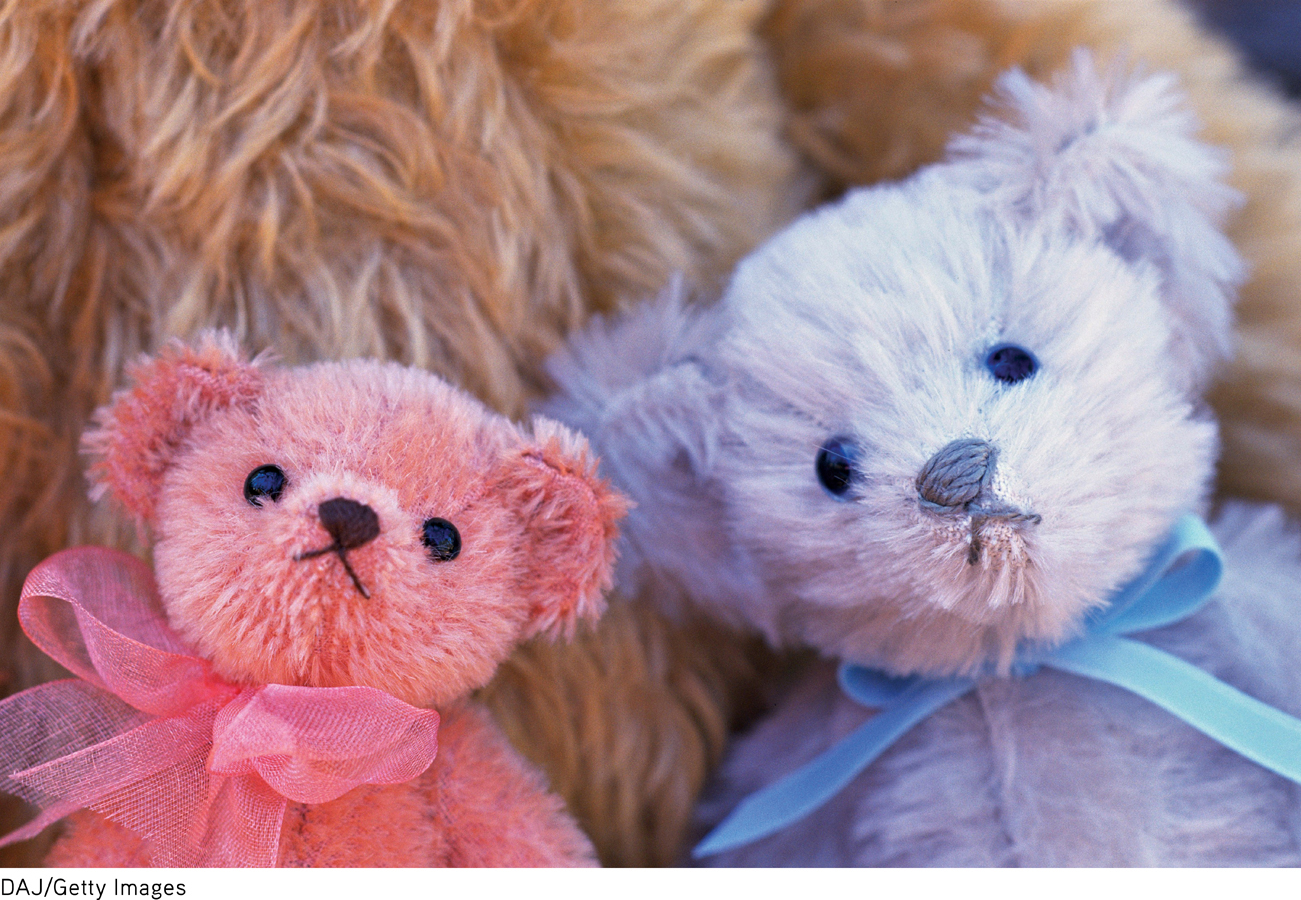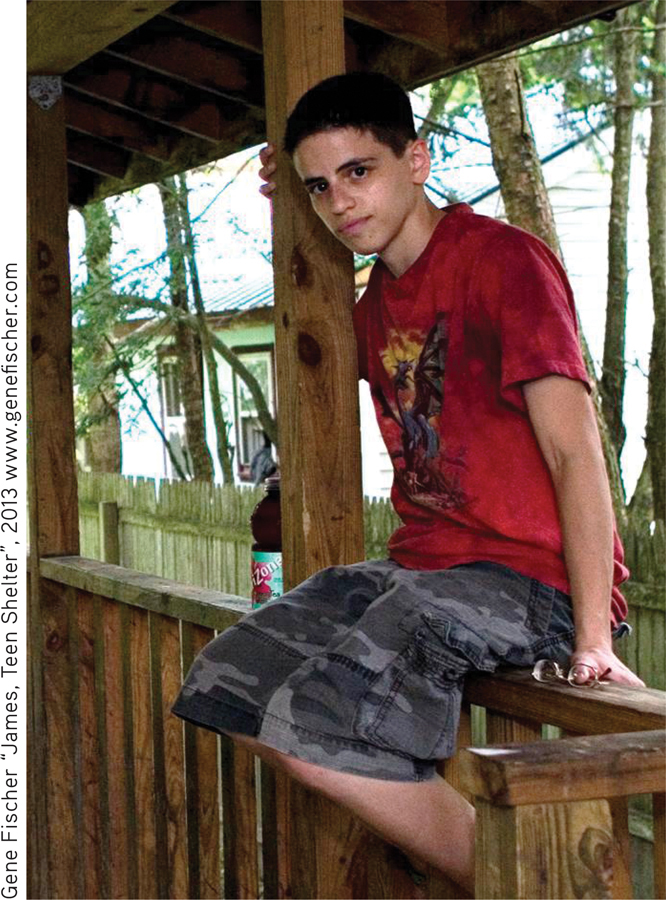Chapter Introduction

MYTH OR SCIENCE?
Is it true …

That most gender differences are caused by biological factors?
That women are more emotional than men?
That girls score just as highly as boys on national tests of math skills?
That transgender people are homosexual?
That most adults have had multiple sexual partners in the last year?
That once they are in their 70s and 80s, very few adults are sexually active?
That you usually know if you’ve contracted a sexually transmitted infection?
10
Gender and Sexuality
DAJ/Getty Images
People Are People
PROLOGUE
IN THIS CHAPTER:
INTRODUCTION: Gender and Sexuality
Gender Stereotypes and Gender Roles
Gender-Role Development: Blue Bears and Pink Bunnies
Human Sexuality
Sexual Behavior
Sexual Disorders and Problems
PSYCH FOR YOUR LIFE: Reducing Conflict in Intimate Relationships
JAMES IS THE KIND OF GUY people are drawn to—extroverted, smart, funny, caring, interesting. The center of his large group of friends, his cell phone buzzed with incessant calls and texts as he and your author Susan talked in the bustling coffee shop in his home town, a rural village in upstate New York. A talented writer and artist, James works at the local food pantry and manages the town’s community garden. You know the type: He’s the caretaker, the peacemaker, the organizer.
James is also transgender. He is biologically female, but he identified as male very early in life. In fact, he can’t even remember a time when he didn’t feel like a male. “I remember being a little kid and trying to get my friends to refer to me as a boy,” he says. His early identification as male evoked a range of reactions. His friends awkwardly attempted to ignore it. His father was angry. His mother was conflicted. Both parents insisted he call himself a “tomboy” instead of a boy, firmly correcting him again and again. Lacking any other way to describe his feelings, James soon began parroting his parents: “I am not a girl, I am a tomboy.”
It wasn’t until middle school that James first heard the term transgender, but at that point he didn’t apply it to himself. Like many others, James thought transgender people “had mental issues” and “needed to go see a therapist.” But James just wanted to live his life in accord with his sense of self—as a boy, not a girl. Although he sometimes tried dressing and acting as a female, he just felt more comfortable with “boy stuff.”
A turning point came a few years ago, when James was 22 years old. Dressed in women’s clothes—”a figure-fitting tank top and everything”—James was working at the community garden. A young boy, trying to be chivalrous, offered to shovel for him. James blew up. “Don’t treat me like a woman,” he screamed.
Later that day, another staff member who overheard James’s extreme reaction asked James point-blank if he had ever thought he might be transgender. Thoughtful, James went home and did some research. “Oh my god,” he realized, “this explains everything!”
But rather than being shocked or exhilarated by his discovery, James was simply relieved to learn that there was a term for his experience—and to learn that it was one that he shared with many other people. Matter-of-factly, he began to live as a man, first swapping out his female clothes for male clothes, then slowly but surely coming out as transgender to his friends and family.
Someday, James hopes to be able to afford to have surgery to alter some of his female sex characteristics to more closely match his identity as male. For now, he is developing a life living as a man and creating a support system around him. Given his take-charge style and outgoing nature, it’s probably not surprising that James soon formed an LGBTQ (lesbian, gay, bisexual, transgender, questioning) group in his rural town.

When James became comfortable telling people that he was transgender, the news elicited a range of reactions from anger and confusion to complete acceptance. His brother was among those who accepted James unconditionally. He said, “Well, I never really saw you as a sister in the first place, so I don’t think anything is changing other than pronouns.”
On the negative (and even dangerous) end of the spectrum of reactions, James has faced enormous prejudice. James observed that some people “hate you the moment they meet you.” Some people have mistakenly assumed James is gay. Others ask inappropriate questions, particularly about his sexuality and even his sex life. He described a wedding where a male guest followed him around trying to get James to show him his identification to prove James was a biological woman. He related another story in which he traveled to a nearby town where a stranger, realizing that James was transgender, threatened to beat him up.
In the past couple of years, James has become a transgender activist. He has spoken at an LGBTQ equality and justice lobbying event in his state capital about the struggles, including homelessness, sometimes suffered by LGBTQ youth. He realizes that “to tell my story will give more power” to his cause. He wants people to know that he’s more than his gender identity, saying, “It’s society that really makes our lives revolve around being transgender, not us.”
Sometimes people ask James why he doesn’t move away from his rural town to a city with a larger transgender community. When people ask this, James says, “I almost feel like I might as well say I should live in a convent for transgendered people so I can be sheltered from society.” James likes rural life and he likes his town. He doesn’t see why he should have to leave because some people don’t accept him. And even though he’s close to his friends in the LGBTQ group, he also wants to be a part of a broader community. “I don’t like being around only people who are similar to me. That’s boring. I like a range of people. And I guess my message is we really need to start viewing people as people. Not by their skin tone. Not by their LGBTQ status. And not by their gender. People are people.”
What James’s story illustrates is that who we are in this life—our identity—is not determined by any single characteristic or quality. James is transgender, but that’s not all James is, just as you are defined by more than a single characteristic. Nonetheless, James’s story illustrates that sexual orientation and gender identity are potent forces that shape and direct each of our lives, including the relationships we form. In this chapter, we’ll explore how gender stereotypes and gender roles affect all of our lives. We’ll also explore human sexuality, including sexual disorders and problems. Throughout the chapter, we’ll come back to James’s story. 